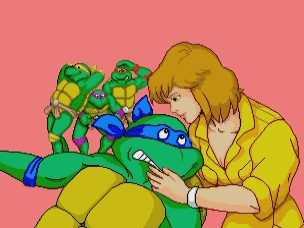The "Use the correct version" of the
rules could perhaps use some rewording to make it less ambiguous. Currently it states:
"Use the (U) version of a ROM unless there is a good reason not to (as an example a shortcut/trick which only works in a different version, or superior music), or the version does not exist."
and then, seemingly referring to the previous point:
"If there already is a published video, do not use a different ROM than what it uses, unless the new ROM is obviously better, and you can show how it should be compared to the existing movie."
It has been argued (and I suppose it's a fair assessment) that the latter statement implies that if a run using something else than a (U) ROM is accepted and published, then subsequent submissions can (if not even
should) use that same ROM. In a way, it seems like the latter rule is giving a valid exception to the former rule (ie. that the (U) ROM should be preferred), if not outright contradicting it.
More importantly, if a rare exception is made to the first rule (by accepting a non-(U) ROM as a one-time event because of exceptional circumstances), the second rule would seem to open the doors to bypass the first rule with impunity.
The second rule also doesn't make it clear whether it's talking about different versions of the game published in different continents, or whether it's perhaps talking about different ROM
dumps of the exact same game cartridge (as it's quite common of the same game to have different ROM dumps made by different people in different ways).
I think that the rules could use some clarification on this regard, to better express the actual intention. (Note that I'm not taking any kind of stance onto which side of the argument the rules should be clarified towards. I'm not a judge. I'm just arguing that they should be made more explicit and less ambiguous in this regard, to avoid future controversy.)
Also a clear stance on exceptions made in special circumstances (and those exceptions not invalidating the rules) should be made in the rules, so that they can be referred to in the future.
 Leonardo (blue mask) is just terrified. The expression on April's face doesn't make the situation any better. And what's with Michelangelo's (yellow mask) pose there? It's just wrong.
Leonardo (blue mask) is just terrified. The expression on April's face doesn't make the situation any better. And what's with Michelangelo's (yellow mask) pose there? It's just wrong.